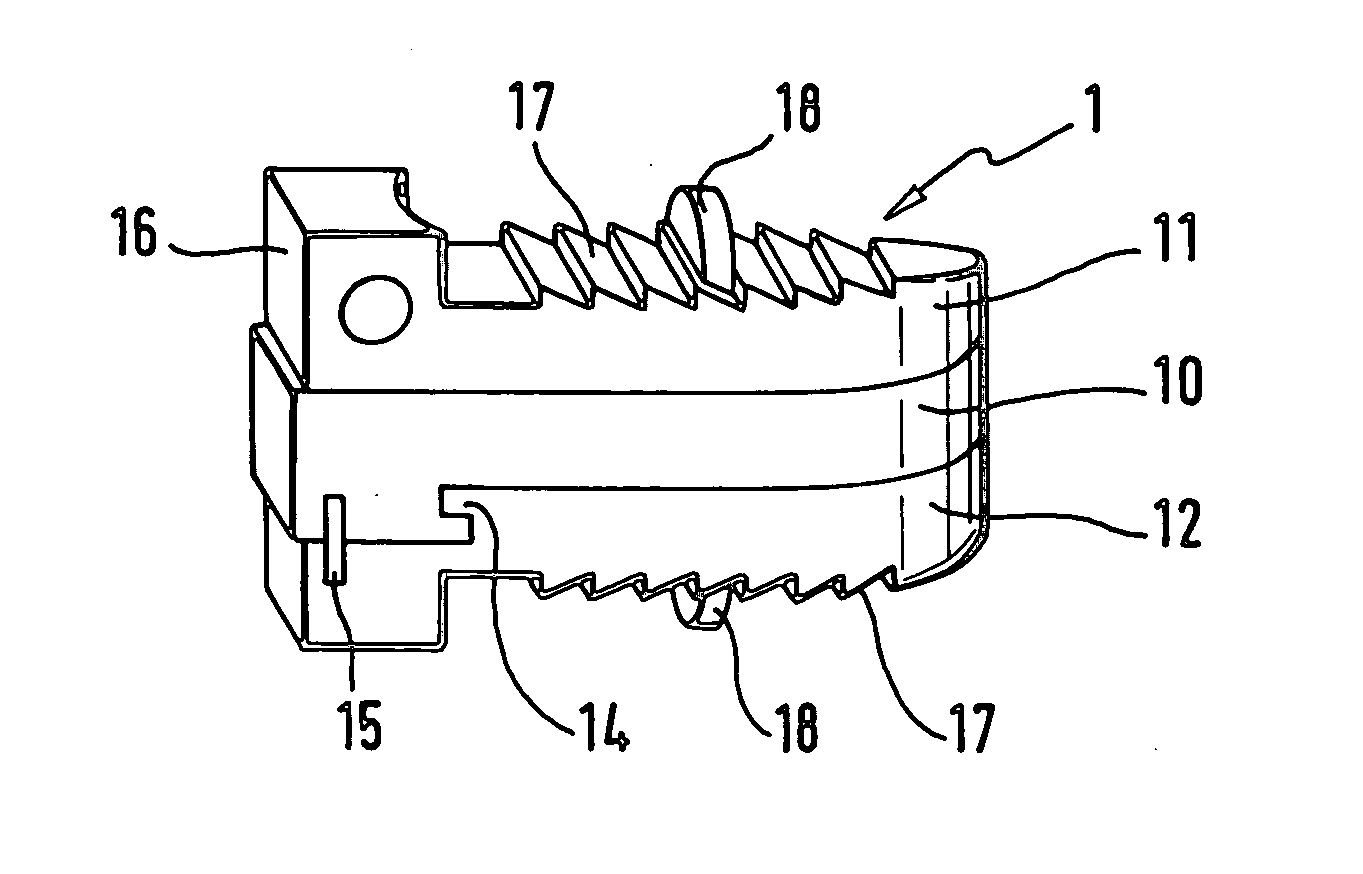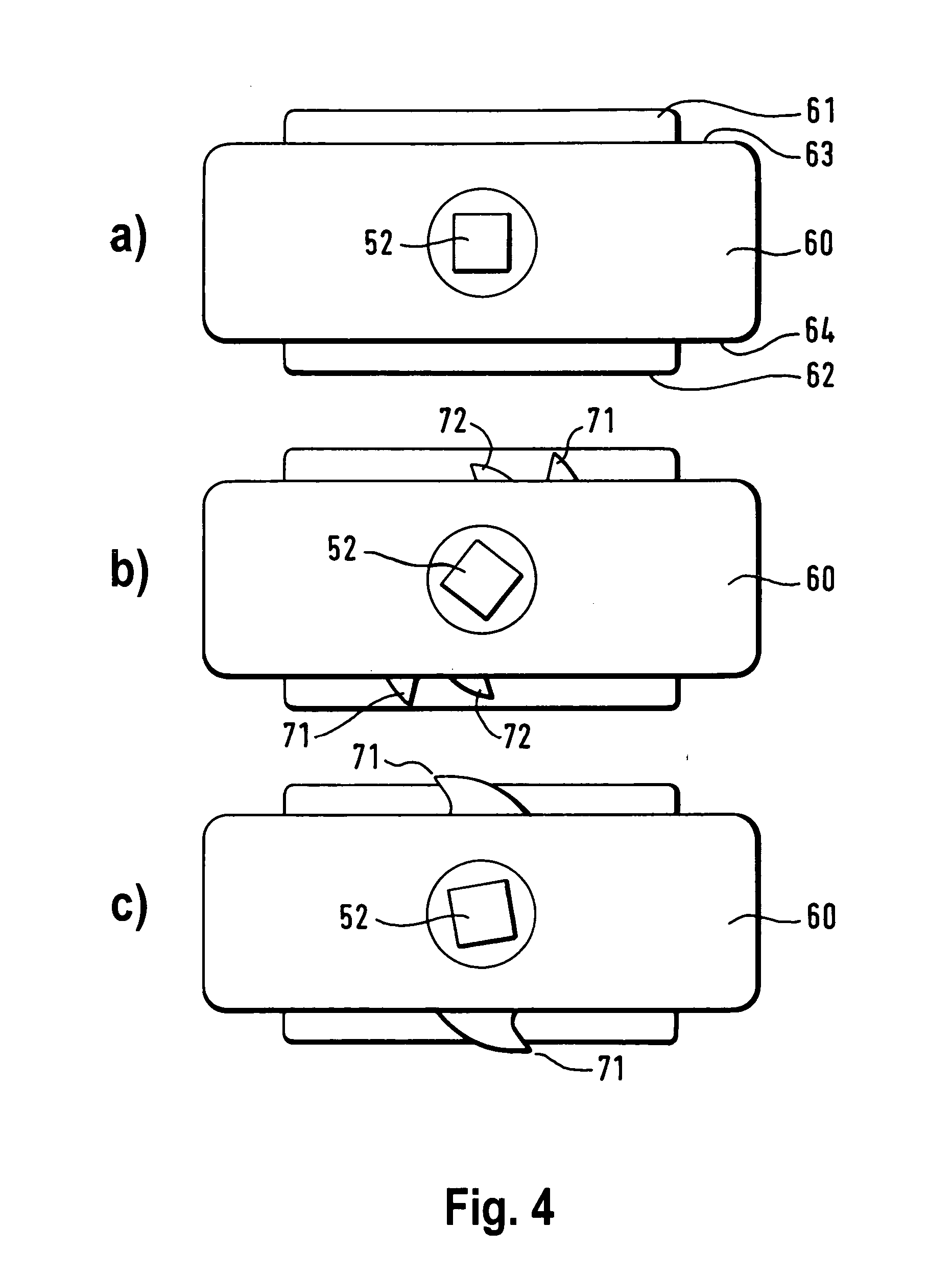Cervical Intervertebral Disc Prosthesis Comprising An Anti-Dislocation Device And Instruments
a technology of cervical disc and anti-dislocation device, which is applied in the field of cervical intervertebral disc prosthesis, can solve the problems of screw and flange dimensions that need to be enlarged, difficult to reconcile, and affect the risk of spinal nerve damage, and achieves good force transmission, great strength, and no risk of bone splintering
- Summary
- Abstract
- Description
- Claims
- Application Information
AI Technical Summary
Benefits of technology
Problems solved by technology
Method used
Image
Examples
Embodiment Construction
[0040] The illustrative embodiment shown in FIGS. 1 to 3 involves a cervical prosthesis according to the invention which is designated overall by reference number 1. It is provided for implantation in the space between two adjacent vertebral bodies of the cervical spine (see FIG. 13).
[0041] The cervical prosthesis 1 comprises an upper closure plate 11 and a lower closure plate 12, with a sliding core 10 arranged between them. The cervical prosthesis 1 is provided for implantation in the space between two adjacent vertebrae of the cervical spine of a human. The upper anchoring plate 11 is secured to the bottom face of the cranial vertebra, and the lower anchoring plate 12 is secured to the top face of the caudal vertebra. The anchoring plates 11, 12 are made of a hard, resistant material, in particular titanium, or another biocompatible material. At least those surfaces of the anchoring plates 11, 12 serving to bear on the adjacent vertebral bodies are preferably provided with a coa...
PUM
| Property | Measurement | Unit |
|---|---|---|
| height | aaaaa | aaaaa |
| height | aaaaa | aaaaa |
| diameter | aaaaa | aaaaa |
Abstract
Description
Claims
Application Information
 Login to View More
Login to View More - R&D
- Intellectual Property
- Life Sciences
- Materials
- Tech Scout
- Unparalleled Data Quality
- Higher Quality Content
- 60% Fewer Hallucinations
Browse by: Latest US Patents, China's latest patents, Technical Efficacy Thesaurus, Application Domain, Technology Topic, Popular Technical Reports.
© 2025 PatSnap. All rights reserved.Legal|Privacy policy|Modern Slavery Act Transparency Statement|Sitemap|About US| Contact US: help@patsnap.com



